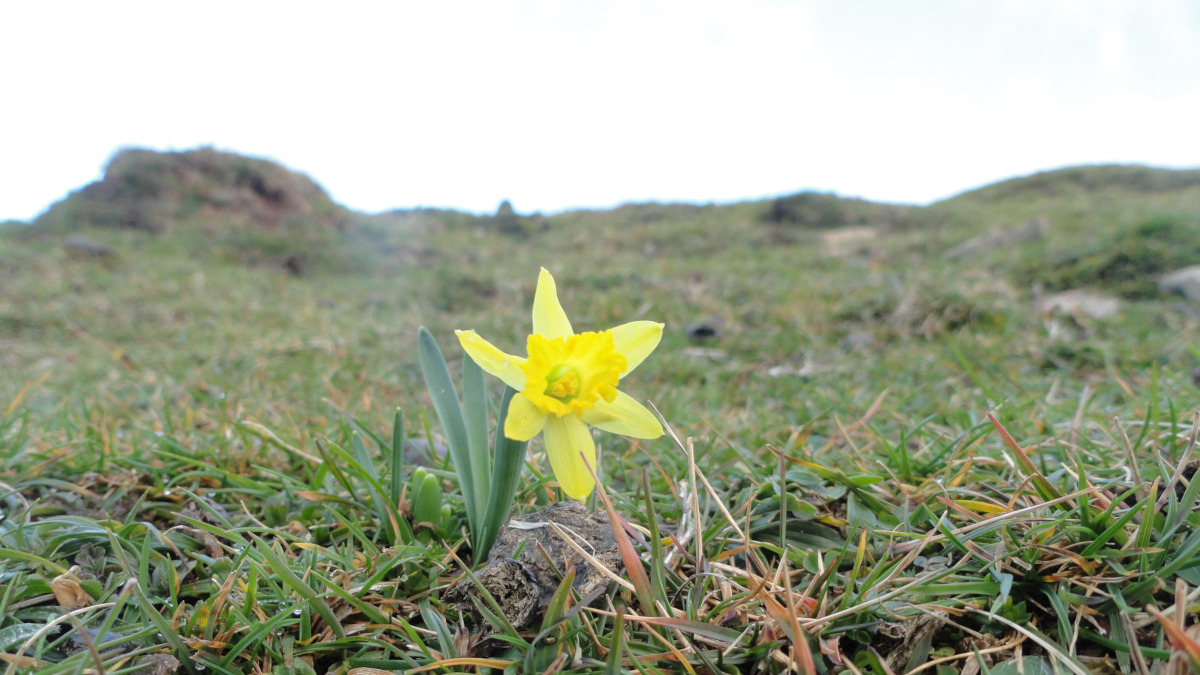There are many species of fauna and flora that can be found in this rugged relief, full of contrasts.
As for vegetation, beech forests are the largest forests in Ataun. In some areas of the Dome, in the Marumendi area and in the area from Lizarrusti to Mount Aitxu, reach 36% of the municipality. The beech (Fagus sylvatica) predominates in these forests, although the yews (Taxus baccata) and the baits (Ilex aquifolium) are also alternated. Since most of these herds are located on acidic grounds providing sandstones, they are considered habitats of European interest (Atlantic acidophilous herds).
Furthermore, the Cantabrian oak which can be found both at the margins of the Dome and in some nearby areas is a habitat of European interest. These forests dominated by oak (Quercus ilex) are not characteristic of the Cantabrian slope, since oak is a kind of Mediterranean forest.
In addition, there are also mixed forests between rural and higher altitude areas. They include many herbaceous, shrub and tree species: white hawthorn (Crataegus monogyna), black hawthorn (Prunus spinosa), tila (Tilia platyphyllo), avellano (Corylus avellana), cherry (Prunus spinosa), ash (Fraxo, Excel), etc.
On the other hand, it is also noteworthy the value of pastures, scrubs and brezals located both in the mountainous area and in the lower valleys, where a great diversity of flora can be found. For example, the narcissus (Narcissus asturiensis) growing in high-mountain meadows or the orchids of beech meadows such as Anacamptis pyramidalis are spectacular.
Diversity of vertebrates and invertebrates is also important. Because of their level of protection, birds and bats are the most important groups. Domo roquets offer excellent protection for predators and scavengers such as the alimoche (Neophron percnopterus), the royal owl (Bubo bubo), the peregrine falco (Falco peregrinus) and the vulture (Gyps fulvus). On the other hand, species such as red milano (Milvus milvus), garza (Ardea cinerea) or water myrrh (Cinclus cinclus) are common in both rural and nearby areas.
Special mention should also be made of the bats hiding in the caves of Ataun, in the reindeer of the roquedos and trees, and in the buildings. Of the 27 bat species in the Basque Country, at least 16 species can be found at different times of the year in Ataun. The best known are the large horseshoe bat of the caves (Rhinolophus ferrumequinum) and the small (Rhinolophus hipposideros), but you can also find the forest bat (Barbastella barbastellus) which is in danger of extinction and which lives in the lush forests of Ataun.
The Agauntza River passing through the town is a place of great value for biodiversity. Since European mink (Mustela lutreola) and Desman (Galemys pyrenaicus) populations have been lost in recent decades, protecting and improving the river is key both for the recovery of these species and for the protection of other living beings associated with these habitats as well as for trout (Salmo trutta).

